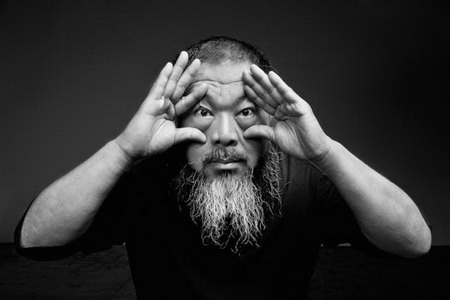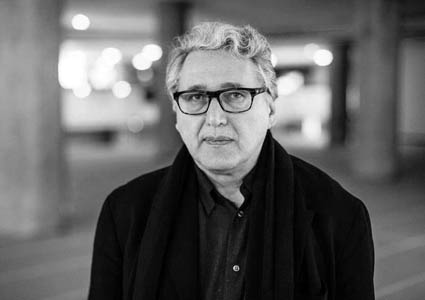
艾未未:彪
Ai Weiwei: Tiger, Tiger, Tiger
展览时间:2015年6月13日—2015年8月31日
开幕酒会:2015年6月13日(周六)下午3: 00 - 6: 00
展览地点:北京前波画廊 - 朝阳区草场地红第一号D座,邮编100015
联系电话:+ 86 (10) 5127 3298
Exhibition Time: June 13, 2015 – August 31, 2015
Opening Reception: 3:00 - 6:00 pm, June 13, 2015
Venue: Chambers Fine Art
Add: Red No.1-D, Caochangdi, Beijing 100015, China
Tel: + 86 (10) 5127 3298
前波画廊将于2015年6月13日起举办题为《艾未未: 彪》的展览。此次展出的作品分别以木质、水晶和陶瓷为创作媒材,生动地展现出艺术家风格迥异的创作手法。与此同时,此次展览将在北京前波画廊举行。画廊位于草场地红砖艺术区红一号D座,由艾未未本人2007年设计,可谓是择木而栖。
当观者来到画廊,首先进入眼帘的将是庭院中央的一棵参天大树,与院中已有的自然生长植物形成对比。艾未未经常在全国各地东奔西走,寻找搜集清朝或更早寺庙中的古木,以用来创作。自2009年起,他开始收集古树,开始了一系列新的艺术尝试和创作。
中国自古以来就多用扭曲多节的树枝和树根制作和装饰家具,这一传统与明代家具的典雅古朴风格截然不同。艾未未将这一传统工艺提升到一个新的高度,运用传统的木工隼卯技术,将不同古树的树枝、树根和树干混合,组装成全新的整体,以向百年甚至千年老树坚韧和顽强的生存能力致敬。前波画廊庭院中展出的这棵树是整个系列中最生动活泼、引人注目的一件。枝蔓连绵缠绕的形态栩栩如生,表现出中国文化中受人宠爱的蟠龙形象。
另外两件在展厅中展出的作品则截然不同。其中一件形态极简,另一件则由3000多件陶瓷碎片组成。在2002年广州三年展中,艾未未的作品《水晶灯》首次使用水晶作为创作媒材。这是一个由数千个多面小水晶组装而成的巨型吊灯,作品对当代暴发户式的室内装饰提出了尖锐的质疑。在这次展出的水晶立方作品中,水晶这一材料以空前的规模呈现在世人面前。从形态上来说,该作品延续了美国60年代的极简主义风格。与此同时,这些水晶立方的坚实质地和折射光线的特质又反映出对媒材本身的不重视性。无论艾未未用什么媒材进行创作,他都会质疑墨守陈规的传统运用方式,并尝试突破其局限性。水晶立方就是最好的例子,其制作过程常常以失败而告终,对专业玻璃工匠的技能带来考验和挑战。
与人工制作的水晶立方不同,《彪》由约3000多件带有老虎或其他猫科动物的图样的陶瓷碎片组成。它们一块挨着一块地堆置在地面上,仿佛是一张由青花瓷碎片编织而成的地毯。这件作品将艾未未对中国传统陶瓷工艺的爱恨交加,以及对每天陪伴着他左右的猫的喜爱,巧妙地结合在一起。从1994年第一次摔碎汉代瓦罐开始,他在一系列作品中仿造、破坏、粉碎及掩盖古代瓦罐或给它们涂上家用油漆,以探讨真伪、古迹以及价值体系等多重问题。尽管艾未未被广泛认为是一个反传统的人,但他的艺术创作又反映出他对文化遗产的珍惜和保护。比如在目前798艺术区重建的明代祠堂中,艺术家给废弃的明清寺庙建筑结构赋予了新的价值。同时《彪》这件作品将注意力集中到深深吸引学者却不受众人瞩目的陶瓷碎片。这些原本已被世人遗忘的陶瓷碎片被小心翼翼地铺在地上,形成一件接地气的雕塑作品。观者在仔细观察各组成部分之间的差异和相似之处的同时,也可以思考过去几百年来中国文化与工艺之大成。
最年来,艾未未在世界各地多次举办了重要大展。前波画廊有幸此次与艺术家合作,参与在他影响下的草场地的蜕变。

Ai Weiwei: Tiger, Tiger, Tiger
Exhibition Date: June 13, 2015 – August,31, 2015
Opening Reception: Saturday, June 13, 2015 3-6 pm
From June 13, 2015 Chambers Fine Art will be hosting Ai Weiwei: Tiger, Tiger, Tiger, an exhibition that reveals in dramatic form the different approaches he adopts in the shaping of the materials with which he works, in this case wood, crystal, and porcelain. Appropriately this installation will take place at Chambers Fine Art in Red No. 1 D in the Red Brick Art Gallery complex in Caochangdi he designed in 2007.
As visitors approach the gallery, they will be confronted by a massive tree in the center of the courtyard that contrasts with the living specimens that dominate it at present. In his travels throughout China in search of ancient wooden elements from Qing dynasty temples and earlier he has used in so many of his works, he began collecting ancient trees from 2009 onwards that inspired a new direction in his work.
In complete contrast to the elegant simplicity of Ming dynasty furniture, there is a long tradition in China of fabricating furniture and decorative objects from naturally contorted wood. Ai carries this to a new level, using traditional woodworking techniques to assemble branches, roots and trunks of unrelated trees into hybrid forms that commemorate the strength and endurance that enabled them to survive for hundreds or perhaps even thousands of years. The tree on display in Chambers’ courtyard is one of the most dramatic of the entire series, extravagant in its piling up of writhing forms that resemble the coiling dragons that feature so prominently in the Chinese imagination.
In complete contrast are the two works inside the gallery, one minimal in form, the other comprising approximately 3,000 porcelain shards. Ai first used crystal as a material in 2002 in Chandelier, the work he submitted to the 2002 Guangzhou Triennial. This consisted of thousands of small, faceted crystal forms assembled in the shape of a giant chandelier and offering a pointed commentary on the excesses of contemporary, nouveau-riche interior decoration, but in the series of crystal cubes the material is presented as solid blocks of unprecedented scale. Formally, they descend from American minimalism of the 1960s but in their solidity and light-refracting qualities they offer an interesting commentary on its lack of interest in materials per se. In whatever medium he works, Ai challenges formerly accepted limitations in the handling of materials, never more so than in the series of crystal cubes that challenge the skills of the glass-making professionals and frequently end in failure.
While the crystal cube is a fabricated object, Tiger, Tiger, Tiger consists of approximately 3,000porcelain shards, each of which bears an image of a tiger or feline creature. Laid side by side on the floor, this variegated carpet of blue and white porcelain shards conflates Ai’s love-hate relationship with the ceramic traditions of China and his love of cats, a considerable number of which roam at liberty in his home and studio. Since 1994 when he first dropped a Han dynasty urn, he has investigated notions of authenticity, antiquity, and value in a challenging series of works which have involved fabricating, shattering, pulverizing, and covering ancient vessels with house-paint. Although generally regarded as an iconoclast, there is a sense in which Ai is also a committed conservationist, giving new value to discarded structural elements from Ming and Qing dynasty temples, reconstructing the Ming dynasty ancestral hall currently on view in the 798 Art District and now with Tiger, Tiger, Tiger, giving metaphorical meaning to thousands of shards that have great interest for scholars but are of limited appeal to the general public. Rescued from oblivion and laid out with the greatest care, the shards are utilized in the creation of a floor-hugging sculpture that simultaneously permits observation of the differences and resemblances between the component parts and reflection on the cultural and technological achievements of China in previous centuries.
In recent years Ai’s work has been the subject of numerous international exhibitions but Chambers Fine Art is particularly proud to be exhibiting his work in Caochangdi, the area that since 1999 he has transformed through his significant architectural practice.

